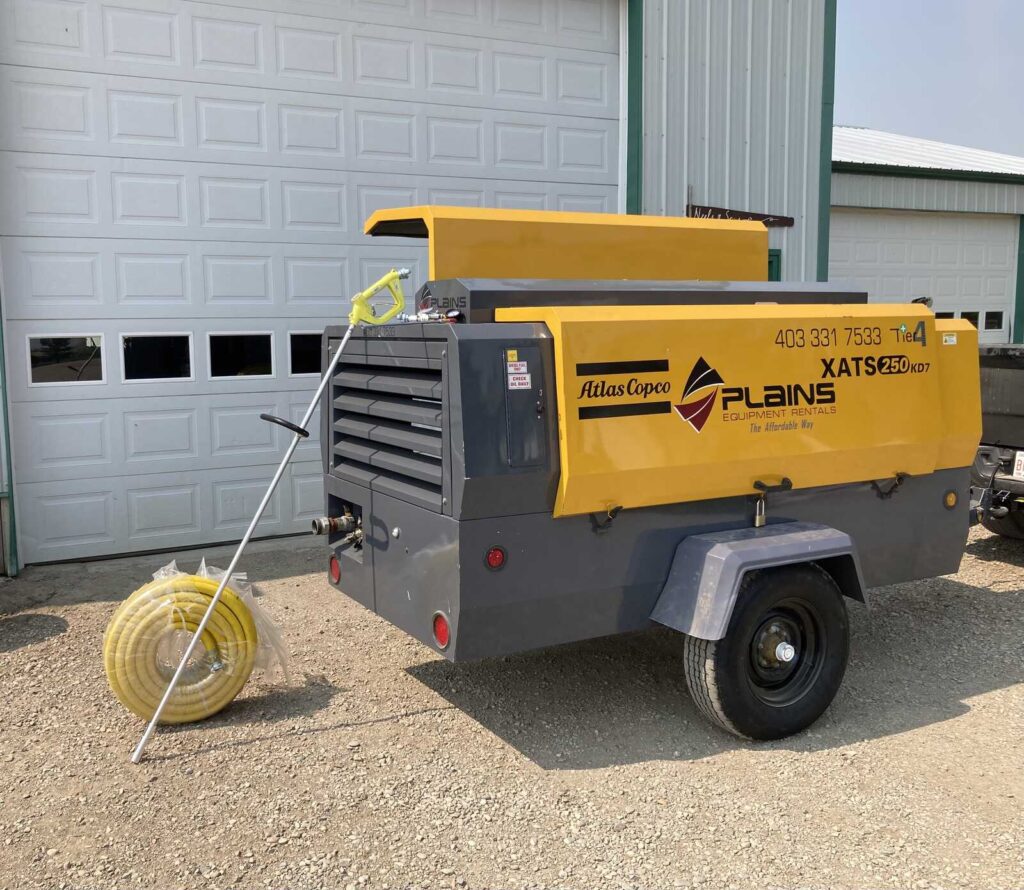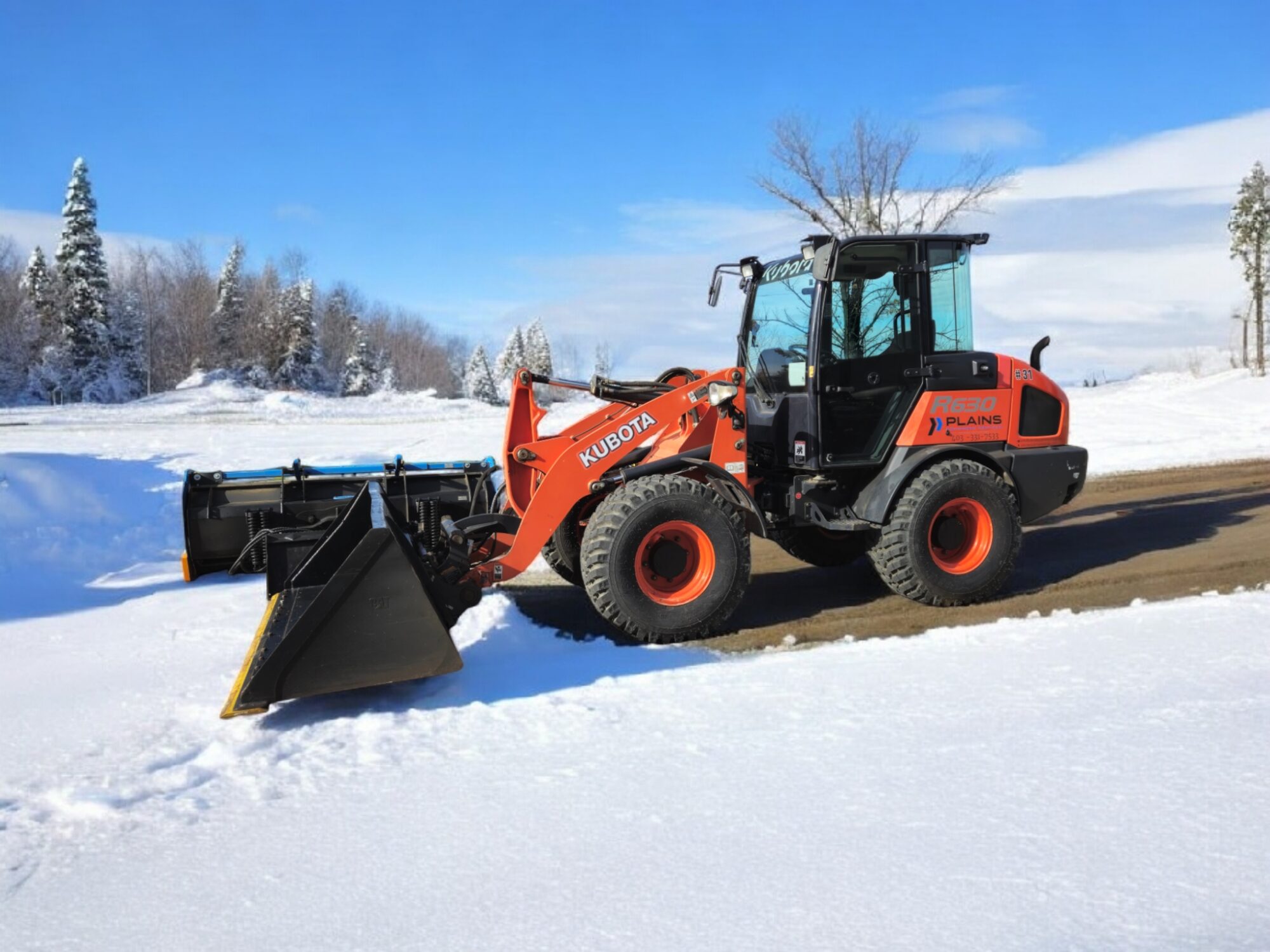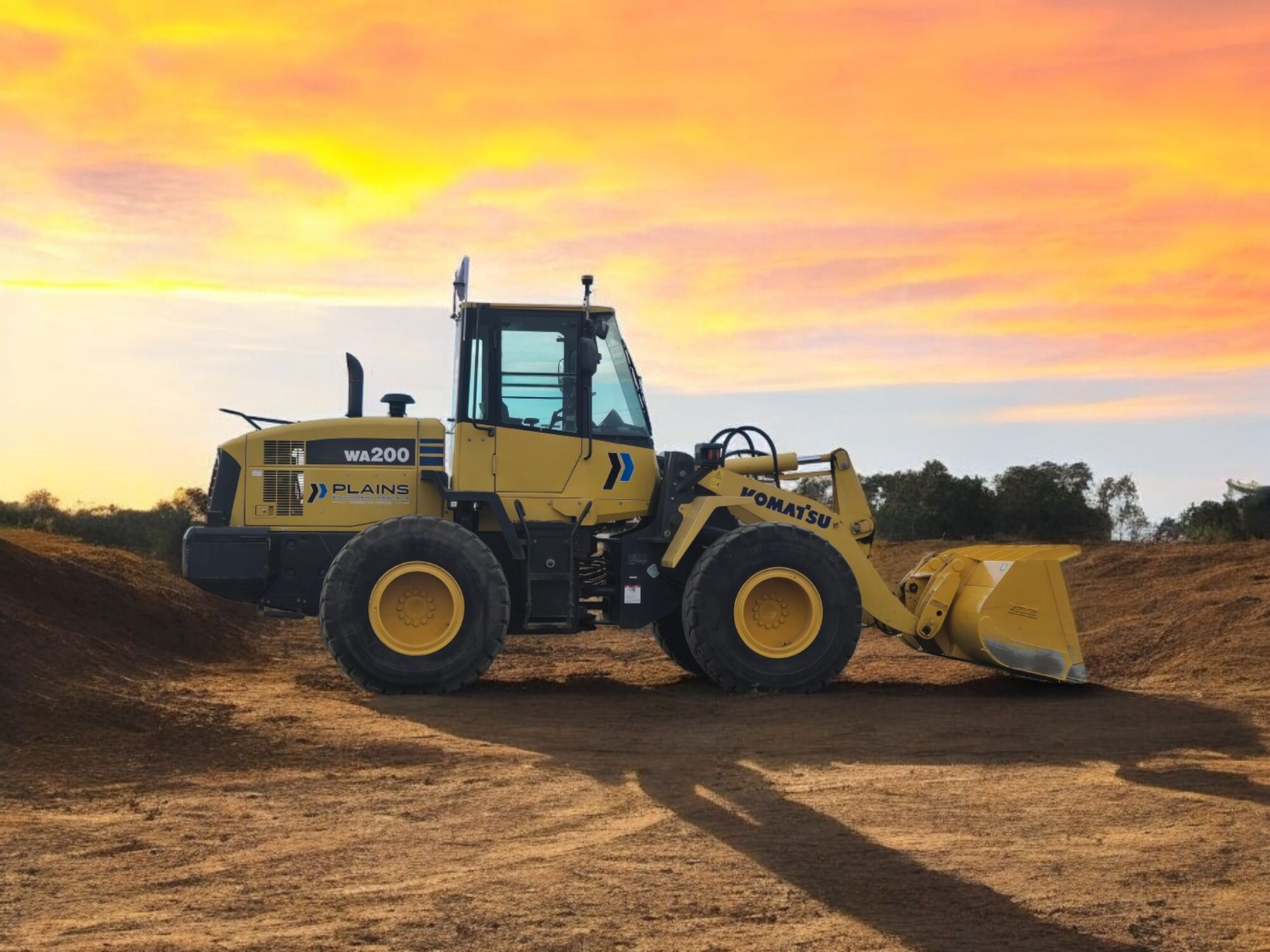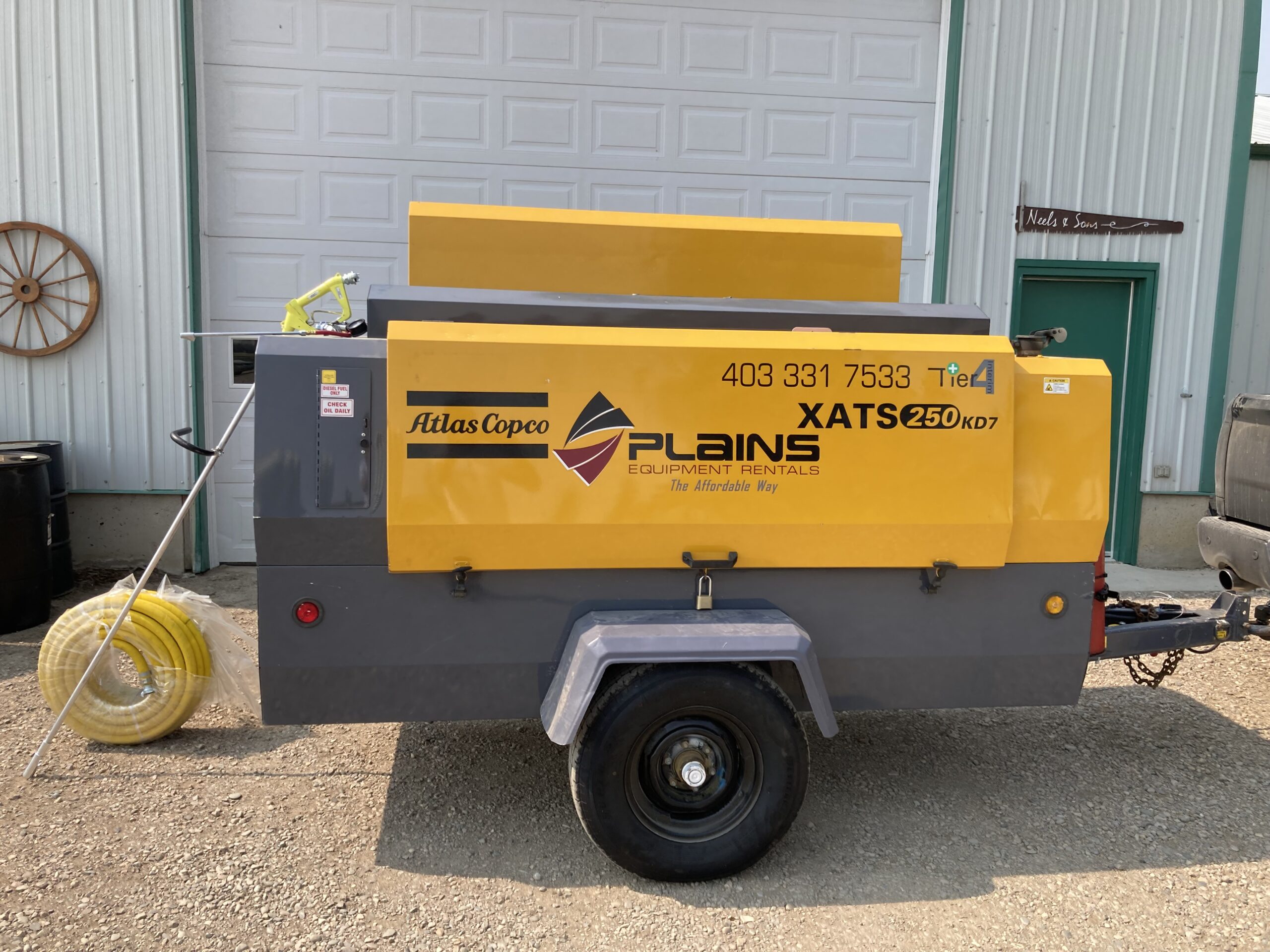Looking for a reliable, portable source of compressed air for your projects? Whether you’re winterizing irrigation lines, powering jackhammers, or working in remote industrial locations, tow behind air compressors deliver high-performance airflow on the go. We’ll help you understand how these machines work, how to choose the right one, what they cost, and how to get the most from your investment.
Table of Contents

What Is a Tow Behind Air Compressor?
Tow behind air compressors are portable, trailer-mounted machines that supply high-pressure air in locations where stationary compressors aren’t feasible. They’re ideal for contractors, municipalities, and agricultural operations that require reliable airflow without permanent infrastructure. In Western Canada, where remote work and seasonal changes are common, their portability is a major advantage.
How Towable Air Compressors Work
Most towable air compressors use rotary screw technology. Inside the unit, dual rotors spin in opposite directions to compress air continuously, no tank required. This design allows for consistent output, measured in CFM (cubic feet per minute), with little delay. Many newer models come with digital controls and displays for real-time monitoring of pressure, temperature, and usage.
Choosing the Right Compressor
Your compressor should match your PSI and CFM needs.
Consulate with a representative to find the right machine for your next project.
Before choosing, consider environmental demands and ask about the equipment’s cold weather capabilities, especially operating in the winter time in Canada.
Applications
Tow behind compressors are found in nearly every sector:
- Construction: Running a jackhammer, sandblasting,appying of liquids.
- Agriculture: Clearing debris, running tools, powering sprayers.
- Oil & Gas: Servicing oil reclamation, and pipeline projects
- Municipal: Line flushing and winterizing irrigation in parks and sports fields
- Utilities: Emergency power and pressure for field crews

Environmental Conditions and Performance
Canada’s weather can take a toll on equipment:
- Cold Climate Tip: Use winter-grade hydraulic oils and fluids, ensure the machine comes with a built in heater or cold weather package.
- Hot Weather Tip: Check regularly that the machines air filters and radiators are free of debris, ensure the covers are closed to promote optimal air flow.
Ensure the unit has been stored and serviced appropriately to avoid breakdowns.
Trusted Brands (with Lower Noise Options)
Noise is a concern, especially in urban or residential zones. Choose modern, quieter models. Top brands include:
- Atlas Copco
- Doosan
- Ingersoll-Rand
- Sullivan Palatek
- Kaeser
- Sullair
- Allmand
- APT (American Pneumatic Tools)
Tow Behind Air Compressor Costs in Canada
Rental Costs:
- Daily: ~$200 for 185 CFM
- Weekly: $650–$850
- Monthly: $1800–$2200
- Larger models (250+ CFM): Higher pricing
Purchase Costs:
- Used: $15,000–$30,000
- New: $35,000–$50,000+
Safety Considerations While Operating Towable Compressors
Whether you’re towing a compressor across town or firing it up on a job site, safety is non-negotiable. These powerful machines demand careful handling and proper procedures to ensure a safe and productive work environment.
Safe Towing Practices
Before hitting the road, always ensure:
- The compressor is properly secured to the trailer hitch.
- Safety chains and breakaway cables are correctly attached.
- Lights and signals are working and compliant with local regulations.
- The trailer tires are properly inflated and in good condition.
- Your tow vehicle has the rated capacity to handle the weight, especially for larger 250+ CFM units.
PPE and On-Site Safety
Operating a towable air compressor requires personal protective equipment (PPE), especially in high-noise environments:
- Hearing protection: Rotary screw compressors can be loud at full throttle.
- Eye protection: Pressurized air can stir up dust, debris, or small projectiles.
- Gloves: Helpful when connecting hoses or performing maintenance.
- Steel-toe boots: Essential when working around heavy equipment.
Be mindful of exhaust outlets, moving parts, and pressurized lines, always depressurize hoses before disconnecting.
Job Site Awareness: Urban vs. Remote
In urban areas, keep the following in mind:
- Use sound barriers or low-noise models to comply with local noise bylaws.
- Ensure the compressor is positioned away from pedestrian walkways or traffic.
- Use cones or signage to mark the working area.
In remote or industrial locations:
- Ensure communication tools are available in case of emergencies.
- Prepare for longer response times for service or medical help.
- Consider the need for wildlife awareness if operating in secluded areas.
Being proactive with safety not only protects your team but also minimizes equipment damage and costly downtime.
Maintenance Tips
Avoid downtime and expensive repairs with basic maintenance:
- Follow manufacturer guidelines for oil and filter changes
- Check fluid levels and temperatures
- Inspect seals and hoses regularly
- Store indoors during off-season
- Replace air intake filters regularly, dusty conditions cause clogging fast
- Grease all moving components on schedule
- Check tire condition before towing
- Log hours and track service intervals
Plains Protection Plan is available for rental customers who want added coverage.

Fuel Options: Diesel vs Gas vs Propane
Most towable compressors run on diesel due to higher torque, efficiency, and easy site refuelling. However, gas and propane models exist for niche applications.
Diesel benefits:
- More efficient at high output
- Easier refuelling on industrial sites
- Longer engine life
Frequently Asked Questions About Tow-Behind Air Compressors
Can I tow a compressor behind a half-ton truck?
In many cases, yes, but it depends on the size of the compressor. Smaller units (like 185 CFM models) typically weigh between 2,000 and 3,000 lbs and can be safely towed by most half-ton trucks. Always check your vehicle’s towing capacity and factor in the tongue weight and trailer brakes. Larger 250+ CFM compressors may exceed the safe limits of a half-ton and require a three-quarter-ton or one-ton truck.
Do I need a special license to tow one?
Generally, no special license is required to tow a standard tow-behind air compressor in most Canadian provinces, including Alberta and Saskatchewan, as long as the combined weight of your truck and trailer is below the regulated limit (typically 11,000 kg combined). For larger units or cross-provincial travel, always check local licensing and towing laws.
Are these compressors road legal?
Yes, most tow-behind compressors from reputable brands are equipped with proper lighting, reflectors, and trailer hitches to meet road safety standards. However, you’ll need a plate or temporary permit in some provinces. Ask your rental company if a plate is included or required.
Tow Behind Compressors Final Thoughts
Tow behind air compressors are essential tools for a range of industries and environments across Western Canada. Choosing the right unit, based on size, noise, fuel, and cost, can mean smoother projects, fewer delays, and better performance overall.
Need help deciding? Contact Plains Equipment Rentals or check out our air compressor rental options across Alberta and Western Canada.





